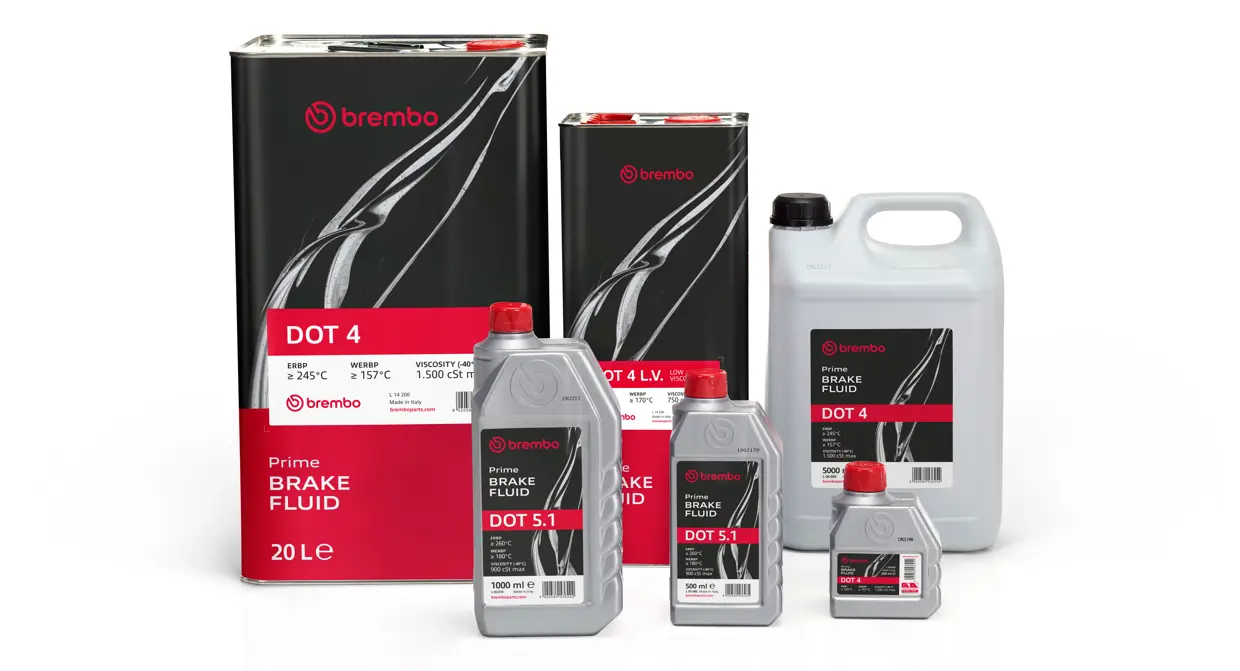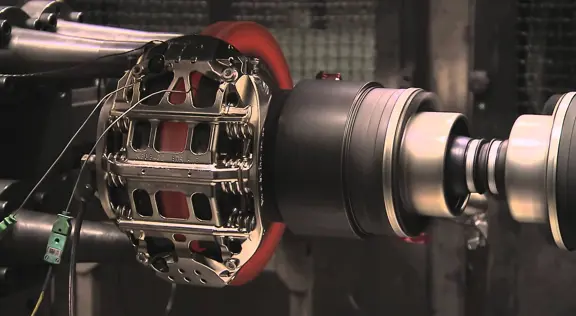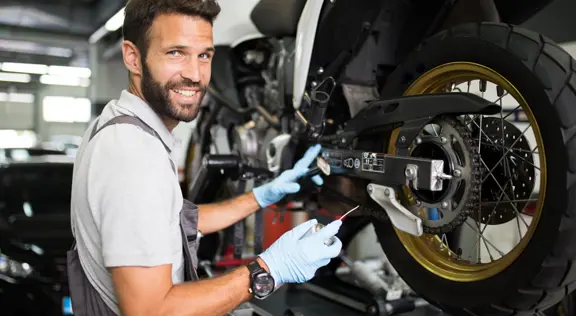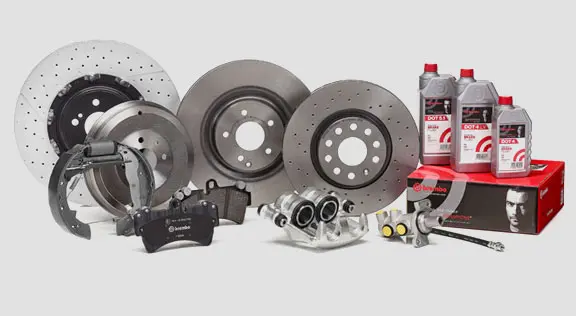
Brake fluid: why it’s vital for your vehicle’s braking system
Brake rotors, calipers, pads and brake master cylinders are the four cardinal points of each braking system; however, they are likely to be useless without the core of the entire system, the brake fluid, which transmits the force exerted by the driver through the brake pedal to the braking system.
Brake fluid: characteristics and types
Brake fluid is distinguished mainly by the fact that it is incompressible, but there are two other important parameters which characterise various types of brake fluid: their boiling point and their viscosity.
- Most modern cars used glycol-based brake fluids, which are labelled using the DOT (Department of Transportation) system. The fluids used most are labelled DOT3, DOT4, DOT5.1: where each label refers to minimum boiling point and viscosity standards, among other things;
- Other vehicles however, those with a centralised braking system and clutch, use a mineral oil-based brake fluid, labelled LHM.
DOT and LHM fluids must never be combined.

Operating temperature and Vapour Lock
Braking systems and brake fluids act across a broad range of temperatures. In extreme conditions, brake fluid temperatures can get up to 200°.
When the operating temperature exceeds the fluid’s boiling point, vapour will form creating bubbles in the fluid and increasing compressibility, what that ultimately means is that it takes longer to brake the vehicle. This is known as Vapour Lock. This phenomenon is due to the absorption of moisture from the outside through porous pipes. This will cause the fluid to form vapour bubbles well before reaching the original boiling point provided on the label.
When the operating temperature exceeds the fluid’s boiling point, vapour will form creating bubbles in the fluid and increasing compressibility, what that ultimately means is that it takes longer to brake the vehicle. This is known as Vapour Lock. This phenomenon is due to the absorption of moisture from the outside through porous pipes. This will cause the fluid to form vapour bubbles well before reaching the original boiling point provided on the label.
Viscosity and electronic systems of the braking system
Viscosity of the brake fluid is another important requirement for the braking system to work well, especially in modern vehicles equipped with anti-lock systems (ABS) and electronic stability programs (ESP).
Fluids flow through control mechanisms in these systems (often valves with very narrow passageways) and it is important that the viscosity be suitable to allow for precise and immediate transmission of the braking force.
Moreover, a good brake fluid must allow the system to work well even in very severe weather, and viscosity must be accounted for to ensure that there’s no delay in response.
Other characteristics should also be taken into account when choosing a good brake fluid; these include: protecting the braking system from corrosion, efficient lubrication, compatibility with elastomers and optimal thermal stability.
Have your brake fluid checked at the time intervals specified by the manufacturer and replace when needed. Braking system maintenance is an important contribution to the safety of your vehicle.
Fluids flow through control mechanisms in these systems (often valves with very narrow passageways) and it is important that the viscosity be suitable to allow for precise and immediate transmission of the braking force.
Moreover, a good brake fluid must allow the system to work well even in very severe weather, and viscosity must be accounted for to ensure that there’s no delay in response.
Other characteristics should also be taken into account when choosing a good brake fluid; these include: protecting the braking system from corrosion, efficient lubrication, compatibility with elastomers and optimal thermal stability.
Have your brake fluid checked at the time intervals specified by the manufacturer and replace when needed. Braking system maintenance is an important contribution to the safety of your vehicle.
Is there anything else you want to ask?
Contact the Brembo technical support team. Our technicians will get back to you as soon as possible!








